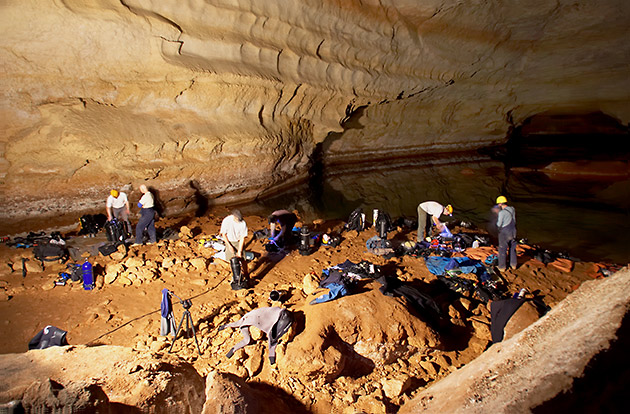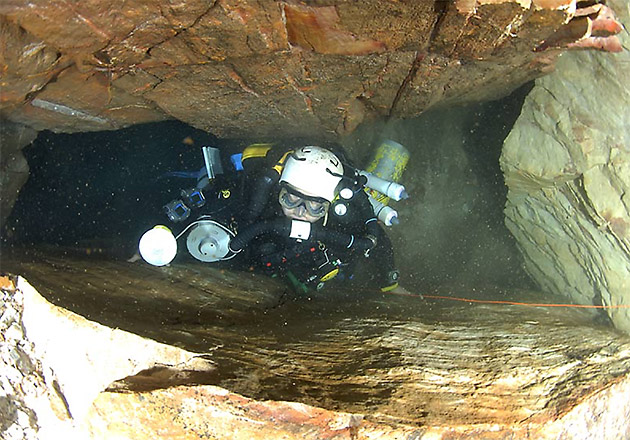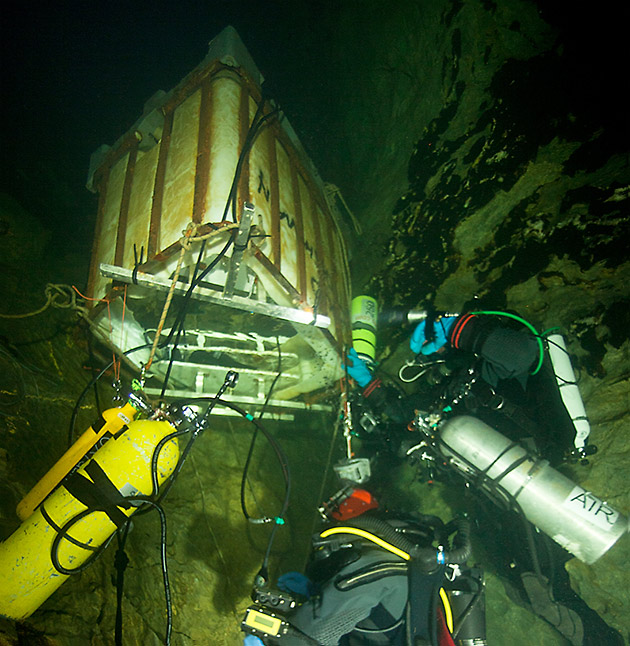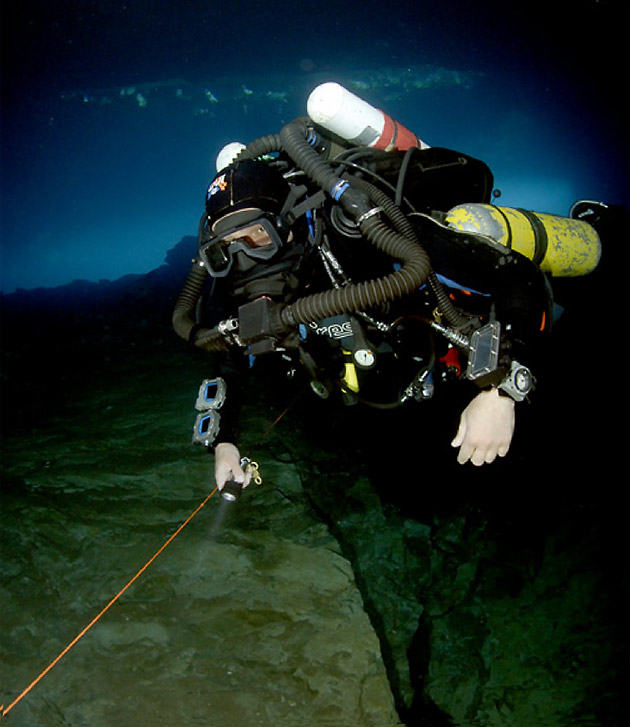16 July, 2018 By: Vanessa Pogorelic
Retired Perth vet Craig Challen made headlines as part of the international contingent of divers who helped free the 12 boys and their soccer coach trapped in the Tham Luang cave in Northern Thailand. For Challen, the risks he takes as a cave diver are all part of the adventure.
If the idea of being in a dark cave, surrounded by tonnes of rock and squeezing through narrow passages far under the surface of the earth sends a chill down your spine, try adding another complicating factor – you are completely submerged in water.
This is the chilling subterranean world cave divers immerse themselves into and the deeper and lesser-known the cave system the bigger the thrill.
It’s also the world that 12 Thai school boys and their coach found themselves suddenly facing when they became trapped in a cave with fast rising waters in July 2018.
Fortunately there are divers like Perth man Craig Challen who specialise in tackling these environments.
After almost three decades of cave diving, the 53-year-old is cool-headed about the risks. For him there is only one: “Breathing water. It has a 100 per cent failure rate!”
Challen is part of a highly experienced group of technical divers known as the Wet Mules and is one of Australia’s most accomplished cave divers.
His skills and experience saw him join the international rescue mission in Thailand alongside cave diving buddy, Adelaide’s Dr Richard Harris, with a captivated world watching.
WA’s underwater cave wonders
Challen’s motivation for his extreme hobby is the thrill of pushing into the unknown.
“For me, that’s the main game really. That’s what it’s all about,” he says.
“Open water diving was nice enough but I got a bit bored looking at fish. I’d heard about cave diving and got introduced to it by someone and it just clicked with me.

“When we were starting out in the ’90s we cut our teeth out on the Nullarbor caves. There are about a dozen diveable caves out there. We found some new areas in a couple of caves out there too.”
In 2008, he and his diving group were the first to find the end of Australia’s most famous diveable cave, Cocklebiddy beneath the Nullarbor. They explored it to its full 6.4km length and were the first dive group to find the end of the cave.
He’s also explored a cave at Cape Range near Exmouth and two near Cervantes, one of which was largely unexplored.
“It was known to be 100m and we explored it to 1.5km. It’s very clear water until you start diving in it - it’s very silty.”
His deepest cave dive in Australia was to a depth of 115m in a Kimberley cave called Kija, which he describes as “spectacular, with very clear water”.
As well as WA, Challen has dived caves all over the world, from New Zealand to South Africa, Mexico and Europe.
Outrunning the risks
Unlike open water diving, in a water-filled cave, there is no option to go straight up to the surface in the event of an emergency.
The only way out is often a small opening in the rock which could be far from where a diver may get into trouble.
“You need to make sure you have a reliable and adequate air supply and that you have the time available to do what you want to do [in the cave], because you don’t have that free ascent to the surface,” he says.
“We always plan for gear failures and carry backup equipment. Anything can fail on you so you have to have a way of getting out.”

Becoming lost in a complex cave system is a very real risk, so the first divers in run guide lines from the surface which they can then follow back.
A more difficult risk to mitigate is getting stuck in narrow sections of rock underwater.
“There are recorded cases where people have got really stuck [between rocks] underwater and have not made it out,” says Challen.
“But usually if you can get in then you can get back out again. You just chill and breath out [to decrease chest width] and squeeze through.”
Tackling decompression in a cave
Challen is considered a technical diver, a diving category where decompression is required or where there is no free ascent to the surface.
“You only dive using air to about 40m,” says Challen. “After that the nitrogen in your air at high pressure has a toxic affect - it causes narcosis - so you have to mix in helium to avoid that.”
Unlike open water divers, technical divers use multiple tanks or tanks known as rebreathers.
“Rebreathers recirculate the same gas and absorb the carbon dioxide out of it. They then add oxygen to keep up with your metabolism. You need a fair bit of experience before you can get on to using that.”
Challen’s longest dive to date was at the Pearse Resurgence cave in New Zealand.
“That dive was 17 hours. Because the water is very cold [approximately 6°C] we have to set up ‘habitats’ underwater to do the decompression in. The habitat is a little shelter that’s got air in it. We drill bolts in the cave walls, anchor the habitat to it and then fill it with air. Then we get into it and sit and wait and breathe.”
As well as allowing for decompression, the habitats let divers warm up, have something to eat and plan the remained of the dive.

Into more uncharted territory
Before the Thai rescue, Challen commented that cave diving was not a growing sport.
“Access to caves is getting more difficult, there’s a lot more compliance and procedure around it than there used to be.
“The Cave Divers Association has about 700 members across Australia. But there are probably a couple of hundred who are really actively diving.”
But in the aftermath of the incredible rescue of the 12 Thai schoolboys and their coach, the sport is currently the hero of the hour and those who dive in water-filled caves have been brought into the light.
Not that Challen, if he can help it, will be found anywhere near the spotlight. With plans in the pipeline for dives in the Kimberly and Canada this year, you're more likely to find him quietly and without fanfare exploring new caves, diving to ever greater lengths and depths below the earth’s surface and pushing the known boundaries of the underground world.

Have your own underwater adventure on the Coral Coast
You can explore some of WA's most famous underwater worlds along Ningaloo Reef with members saving saving up to 25% off stays at RAC Parks and Resorts along the Coral Coast.
